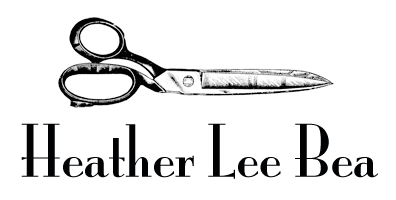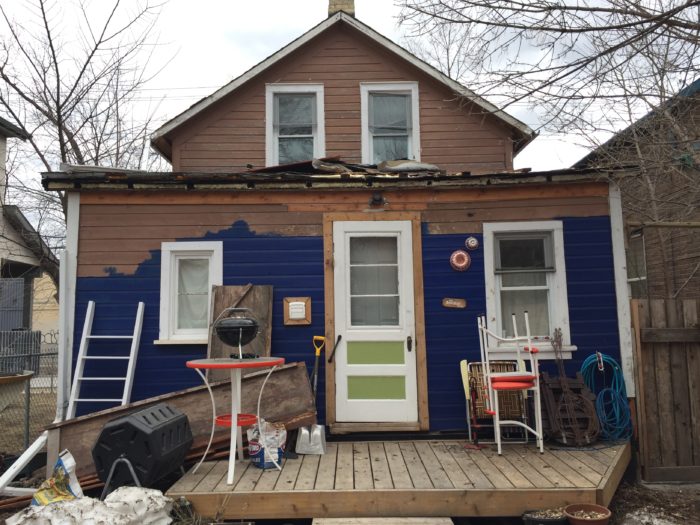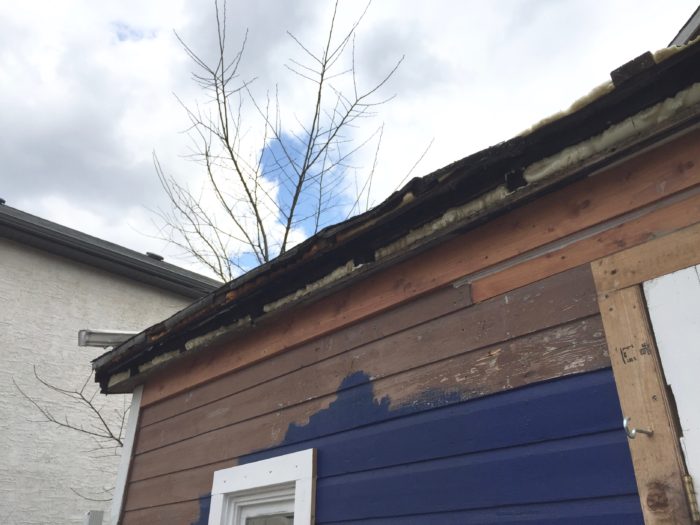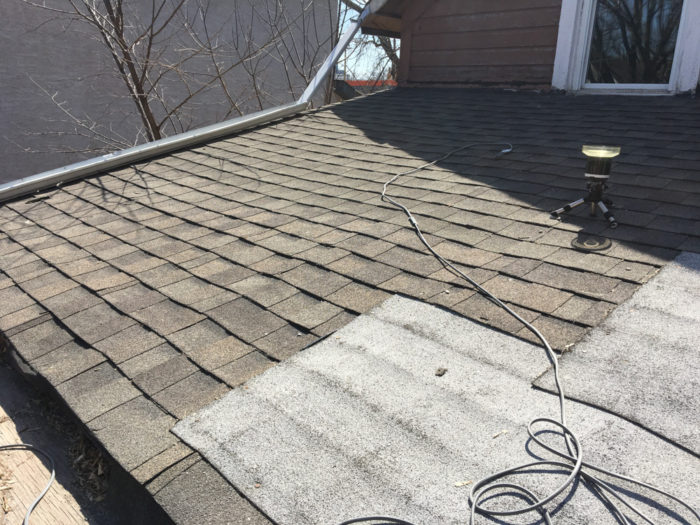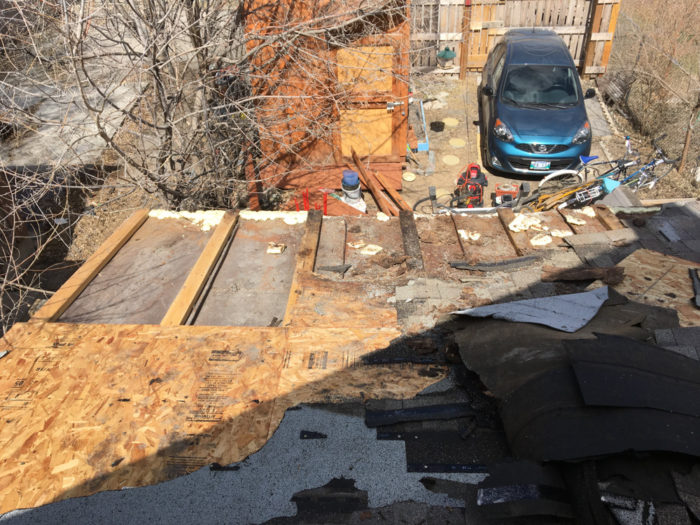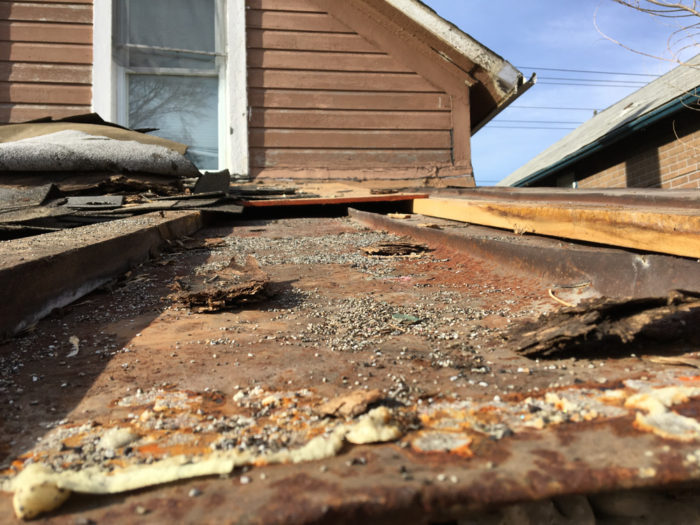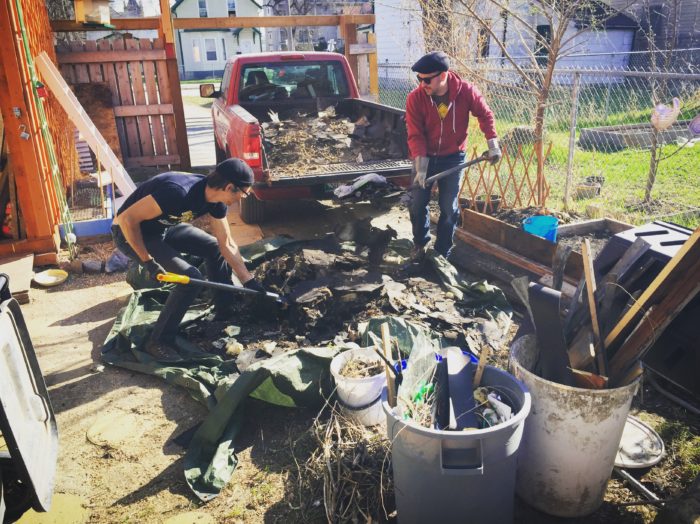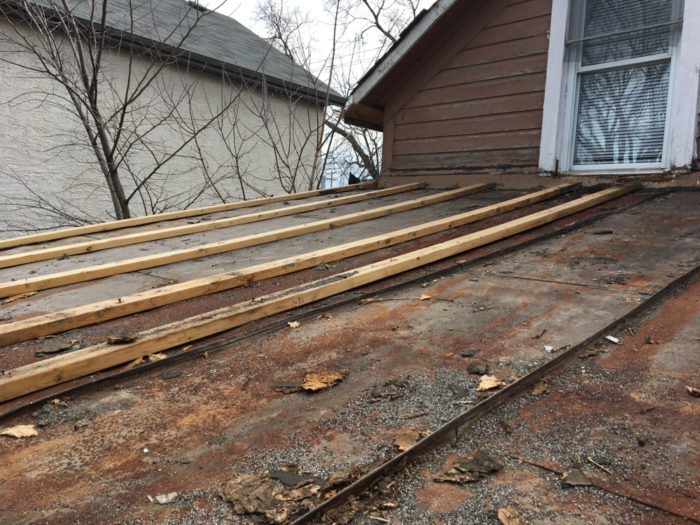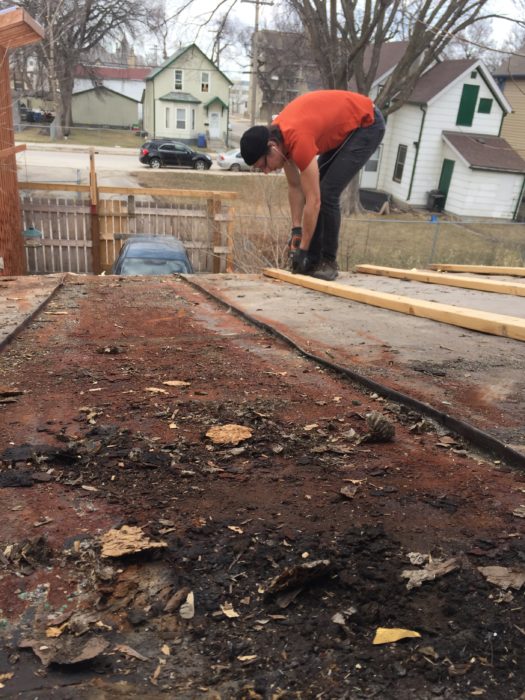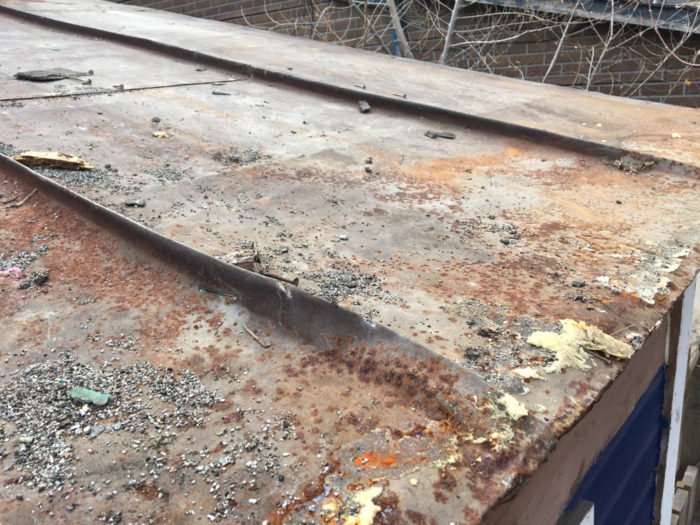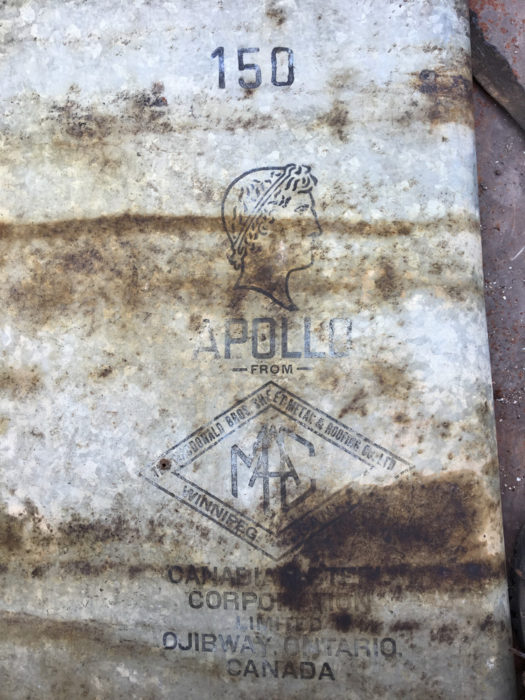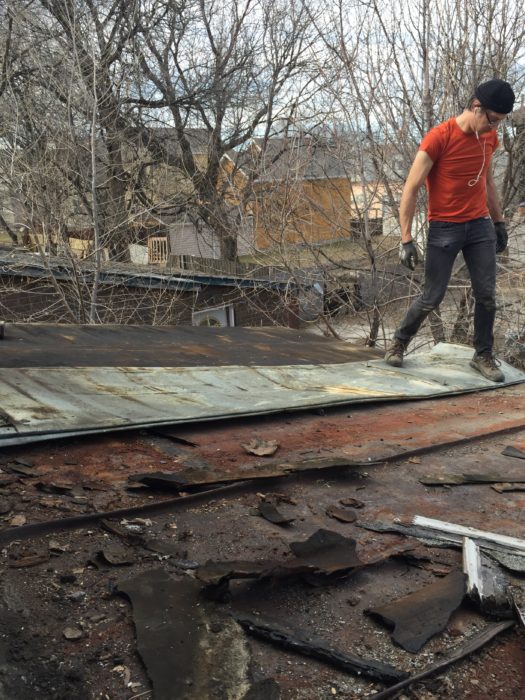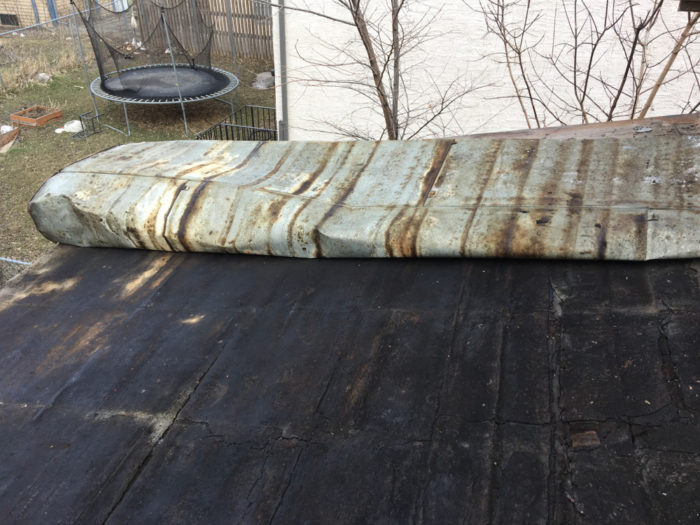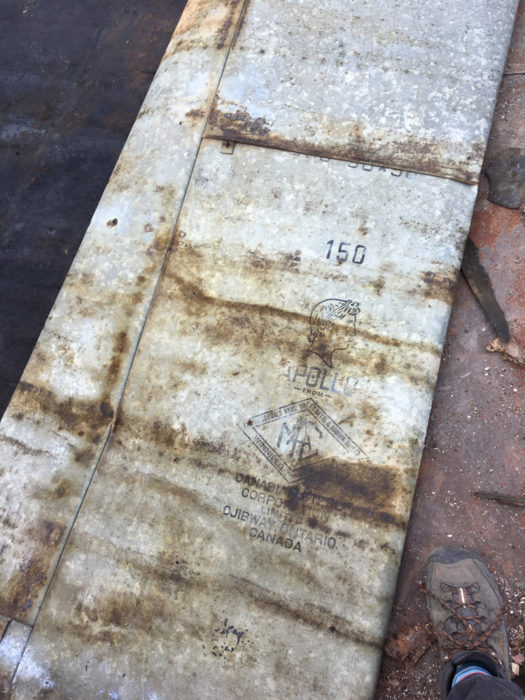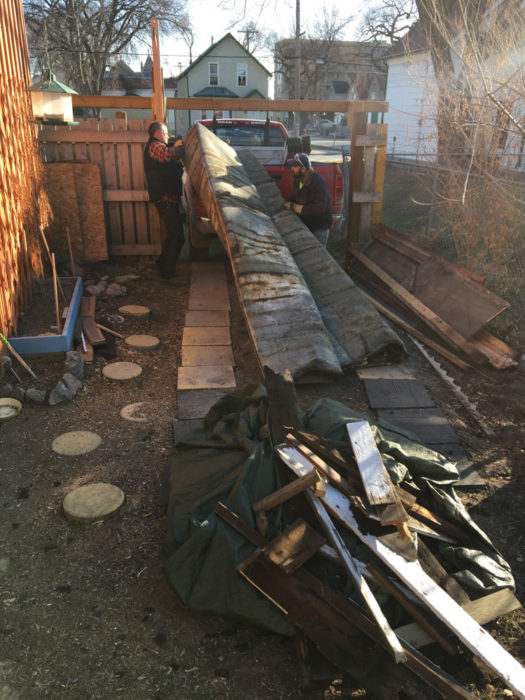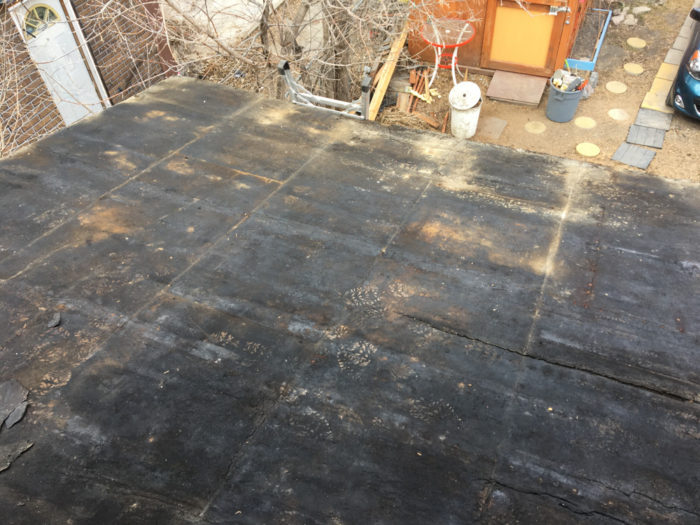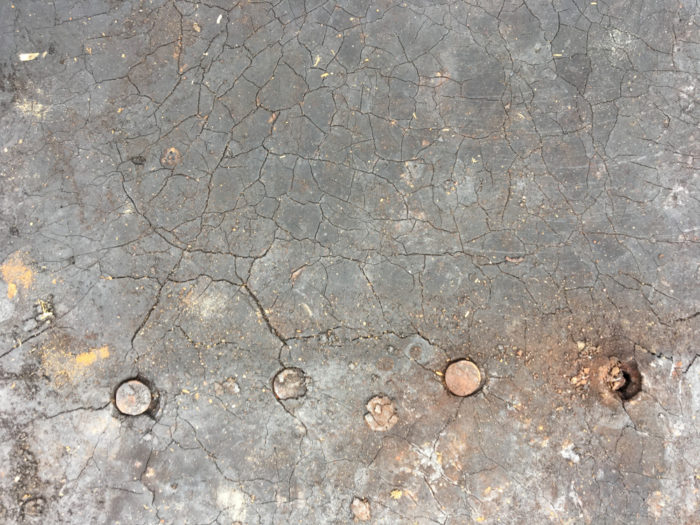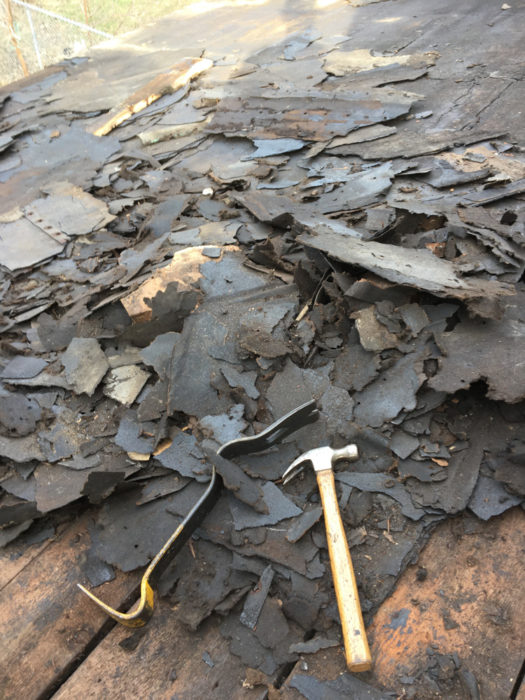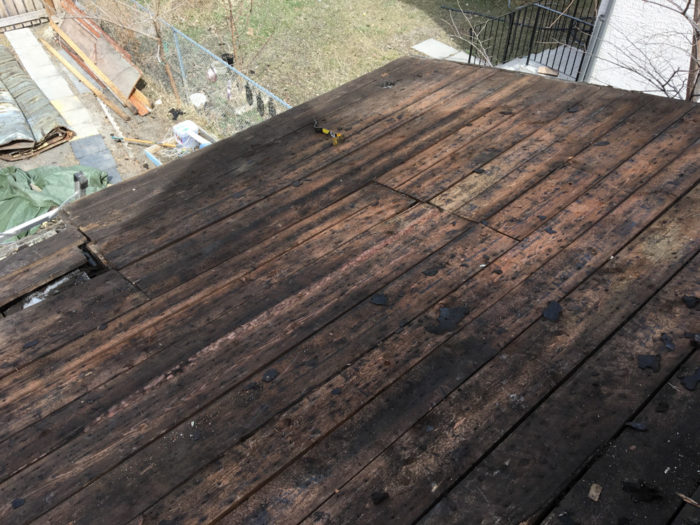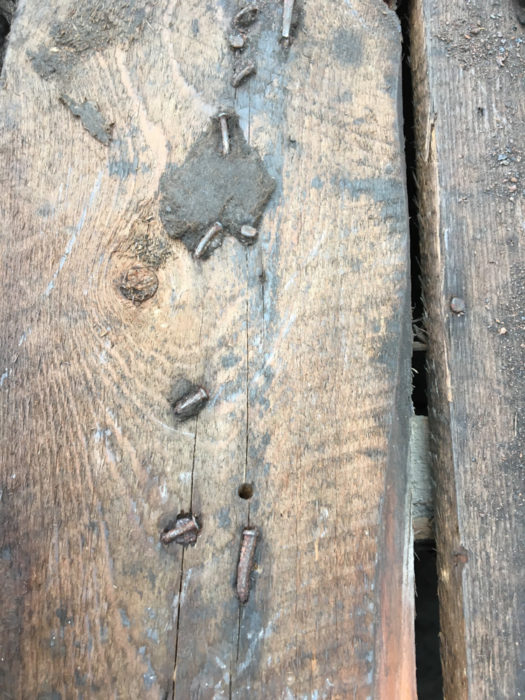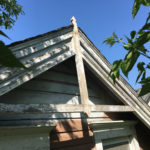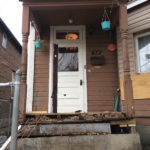Last summer (2018), the time had finally come. The roof on the NewOldHouse was in a bad state from years of shoddy repairs and basic neglect. You may have noticed an ongoing theme…
We had already stopped the basement from leaking, reinforced various areas and done a pretty complete makeover inside, but the exterior needed some love and there is no point repainting if we were going to be doing roof repairs.
In early spring (April) the process began with the kitchen, which was initially going to be the only part re-done that summer. We could tell it was extra wonky by looking at the sides and lower edge. It dipped down towards the centre right above our back door (not great). This had caused rainwater, melting snow and ice to pool there and leak down into the doorjamb and in front of the door.
We could also see that good old Slappy had once again added a second layer of roof on top of an existing one rather than repair it underneath.
Roof #1 (most recent) was asphalt shingles in quite poor condition on a ‘support’ layer of disintegrating chip board on top of some 2x3s.
And of course, major piles of debris had to be cleaned up and hauled away after each step.
Under the shingles, astoundingly, was a metal roof likely dating from the 1920s or 1930s with raised ridges running from the house to the lower edge. This layer was pried off and rolled like a carpet to investigate what was underneath.
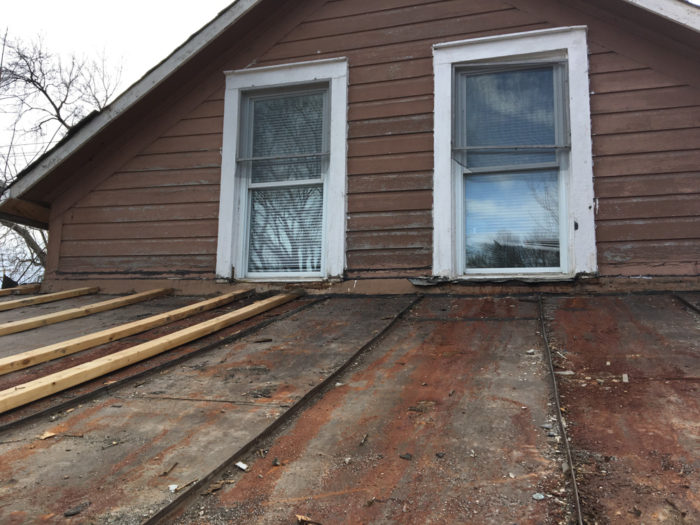
The addition of the modern roof had partially covered and rotted the windowsills, since it was not sealed well and water seeped down between the layers.
Sadly, it was not in good enough shape to keep, but we did save a bit of it that had an intact stamp on the back indicating where it was made and giving us clues as the the date.
From the Manitoba Historical Society website:
Duncan Robert Grant MacDonald (1887-1949)
Aircraft manufacturer.
Born at Sunny Brae, Nova Scotia in 1887, he came to Manitoba with his brother James in 1904 on a harvesters’ excursion train, to a farm near Portage la Prairie. Two years later, the brothers formed the MacDonald Brothers Sheet Metal and Roofing Company, of which he was Secretary-Treasurer. In 1930, the brothers were attracted to the aircraft industry, forming the MacDonald Brothers Aircraft Limited (later known as Bristol Aerospace) to manufacture floats for aircraft of Western Canada Airways. The firm became one of the world’s largest makers of seaplane floats. They built aircraft parts, farm implements, and electronic and radio equipment at a manufacturing plant at the Stevenson Field (now Richardson International Airport).
The Canadian Steel Corporation Limited was located in Ojibway Ontario. The town of Ojibway was incorporated in 1913. It was intended to be a “company town” for the Canadian Steel Corporation. However, the project never fully developed due to financial reasons. (from the City of Windsor website)
“The MacDonald Bros. Sheet Metal and Roofing Company started as a construction company back in 1914, became MacDonald Bros. Aircraft in 1930…” (from mbaerospace.ca)
We can therefore deduce that this roof is definitely pre-1930, and knowing that the basement was dug out and cladded in the 1920s, we assume that the whole house got a major renovation at this time.
This roof was less destroyed than the first, and we wanted to keep it as intact as possible, so it got pried up and rolled before being hoisted down into the yard.
Since we didn’t have a place to re-use the metal, we donated it to an artist who lives in our neighbourhood to use in a creative way. It was quite the beast to load into their truck, but we are glad that it went to a good home!
Under the metal was a layer of tarpaper which may be either un underlayment for the metal, or possibly the part of the original roof of the kitchen. It too was pretty rough (not surprising considering it’s at least 100 years old!), so it too was scraped off. Roofing makes a lot of mess/garbage!
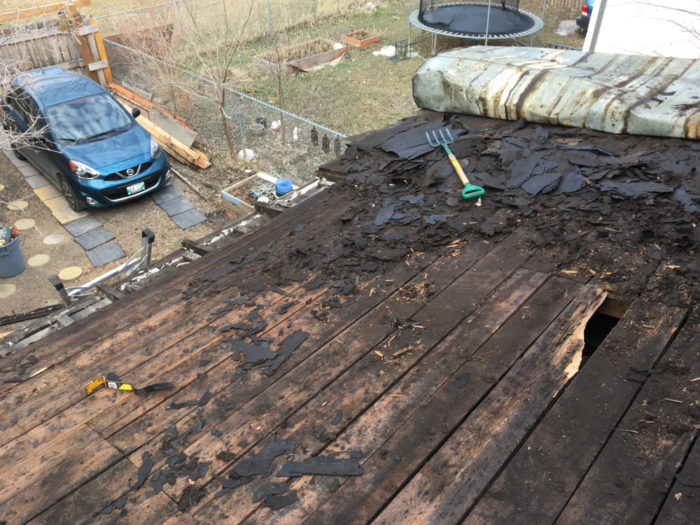
Scraping tarpaper off of the 120 year old wood planks. We could already see damage that needed to be repaired.
Now down to the ‘bare bones’, the major task of repairing the 121 year old wooden planks and internal structures could start. More on that in the next post!
